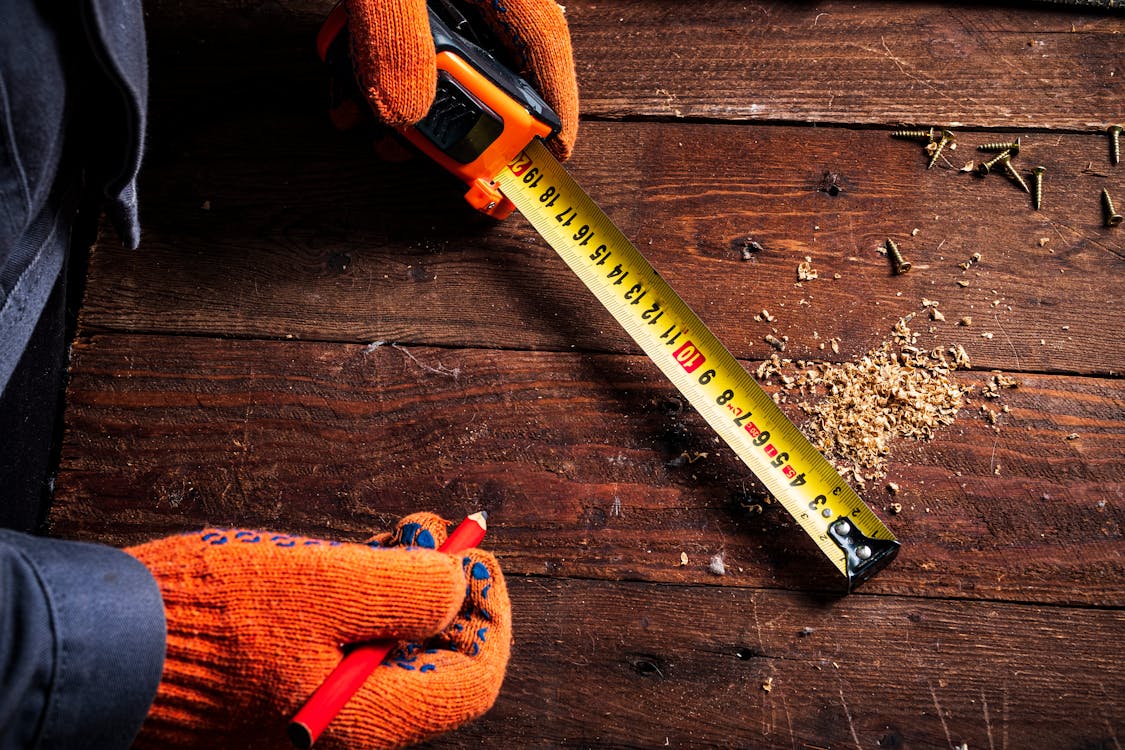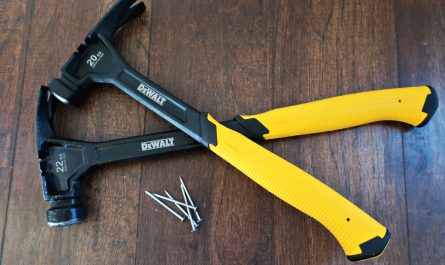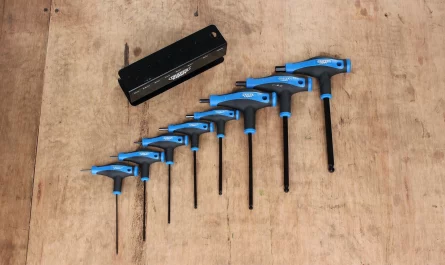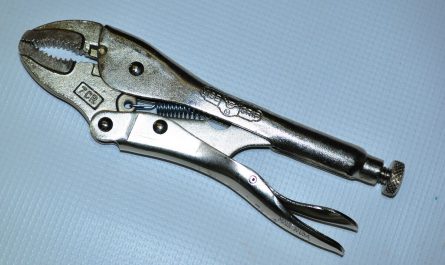In carpentry, construction, and woodworking, precision is critical — and the tape measure is the go-to tool for ensuring exact measurements and accurate layouts. Whether you’re framing a wall, cutting trim, or installing cabinetry, a tape measure ensures your work fits together flawlessly. Compact, easy to use, and essential on any jobsite, the tape measure is the starting point for almost every professional or DIY task.
History and Evolution of the Tape Measure
The origins of measurement tools go back to ancient civilizations, which used ropes, sticks, and even body parts (like feet or hands) to measure distance. The modern tape measure, however, traces back to 19th-century innovations. In 1868, an Englishman named James Chesterman patented a spring tape measure, but it wasn’t until the 20th century that the design became more practical, compact, and widely used.
Today’s tape measures are highly refined — featuring self-retracting steel tapes, ergonomic casings, magnetic hooks, and even digital readouts. Whether analog or digital, they’ve become indispensable in carpentry, offering precise, portable measuring with ease and reliability.
Types of Tape Measures and Their Applications
1.Standard (Spring Return) Tape Measure

Description and Use:
The most common type of tape measure found in tool belts is the retractable steel tape measure, a staple in carpentry, construction, and remodeling work. It features a flexible, curved steel blade that extends and retracts smoothly using an internal spring mechanism. The blade is usually marked with imperial units, metric units, or both, providing versatility for various measurement needs. Bold, easy-to-read markings make it simple to take quick, accurate measurements on the job.
This tape measure is essential for a wide range of tasks—from laying out framing and marking cut lines to verifying dimensions during assembly and installation. Its compact, portable design makes it easy to clip onto a tool belt or fit in a pocket, ensuring it’s always within reach on the worksite.
With features like a locking mechanism to hold measurements in place, a hook for gripping edges, and sometimes even magnetic tips or standout blades for extended reach, the steel tape measure is built for convenience and reliability. Whether you’re building, renovating, or making quick measurements, this tool is indispensable for achieving precise, consistent results in nearly every type of construction or carpentry project.
Technical Characteristics:
- Blade Material: Steel (sometimes coated with nylon or Mylar for durability)
- Length: 3 – 10 meters (10 – 33 feet)
- Case: Plastic or rubberized casing for impact resistance
- Features: Belt clip, thumb lock, hook (magnetic or standard), stand-out capability
Price Range:
€5 – €30
2.Long Tape Measure (Surveyor’s Tape)
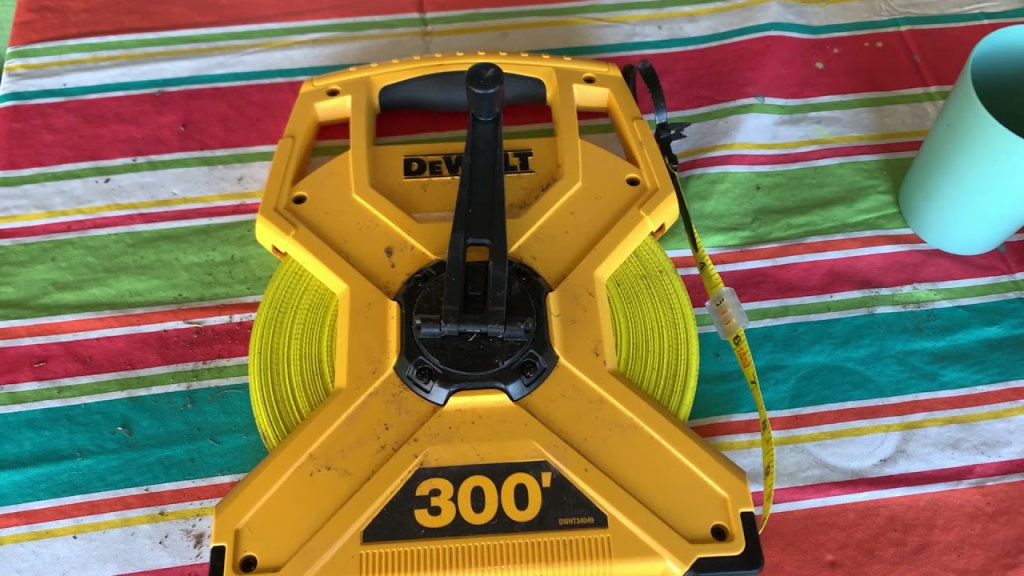
Description and Use:
Designed for measuring long distances, long tape measures are essential tools for tasks such as room layouts, large building projects, landscaping, and foundation work. Unlike standard retractable tapes, these tape measures feature a flexible fiberglass or steel blade that is housed in a crank reel, allowing for easy winding and unwinding over extended spans. They are capable of measuring distances up to 100 meters (or more), making them ideal for both indoor and outdoor applications where precision over long ranges is needed.
Long tape measures are commonly used by surveyors, builders, and landscapers to map out foundations, determine property lines, or plan large-scale layouts. The fiberglass variants are especially suited for outdoor use due to their resistance to stretching, rust, and weather conditions, while steel versions offer increased durability and accuracy for heavy-duty use.
Most long tape measures include clearly printed markings in metric, imperial, or dual scales for versatile use across different standards. Their open-reel or closed-reel designs typically include sturdy handles or cranks to make rewinding fast and efficient. For any project that requires extended measurements with reliable accuracy, a long tape measure is the go-to tool for professionals working on a larger scale.
Technical Characteristics:
- Blade Material: Fiberglass or stainless steel
- Length: 20 – 100 meters
- Case: Open or closed reel with manual winding
- Features: Weather-resistant, non-stretch, high visibility
Price Range:
€20 – €70
3.Digital Tape Measure

Description and Use:
Digital tape measures blend the reliability of traditional measuring tools with modern technology to provide ultra-precise and efficient measurements. These advanced tools feature a standard retractable blade along with a built-in digital readout screen that displays accurate measurements in real-time. Many models also include additional features such as laser distance measurement, unit conversion between metric and imperial systems, memory storage for multiple readings, and backlit displays for improved visibility in low-light conditions.
Ideal for fine woodworking, cabinetry, interior design, and other precision-driven tasks, digital tape measures significantly reduce the risk of human error and enhance measuring speed, especially during repetitive or complex measurements. The digital display allows for quick and clear readings, eliminating the need to interpret small or faded scale markings on the blade.
Some models also feature Bluetooth connectivity for syncing measurements with mobile apps or design software, streamlining workflows in professional settings. Whether you’re marking exact cuts, fitting cabinetry, or aligning fixtures with pinpoint accuracy, a digital tape measure offers a smart, reliable solution for high-accuracy measuring needs, making it an increasingly popular choice among tradespeople and precision-focused professionals.
Technical Characteristics:
- Blade Material: Steel or nylon-coated
- Length: 3 – 8 meters
- Features: LCD display, memory storage, unit conversion, some include laser measure
- Power Source: Battery-operated
Price Range:
€30 – €150
Conclusion
The tape measure is a fundamental tool in any carpenter’s toolkit, offering precision, reliability, and ease of use. Whether you’re a professional builder or a weekend DIYer, accurate measurements are essential to the success of any project — and the tape measure delivers just that.
From framing walls to installing trim or cabinets, it ensures materials are cut and placed correctly, reducing waste and avoiding costly mistakes. Traditional spring-return tapes are trusted for their durability, while digital and laser options provide added accuracy and convenience for more advanced tasks.
Versatile and easy to carry, a tape measure is useful in nearly every phase of construction. It’s the first tool picked up on the job site and often the last one put down. More than a simple measuring device, it represents the foundation of quality workmanship — a small tool with a big impact on precision, planning, and professional results.
